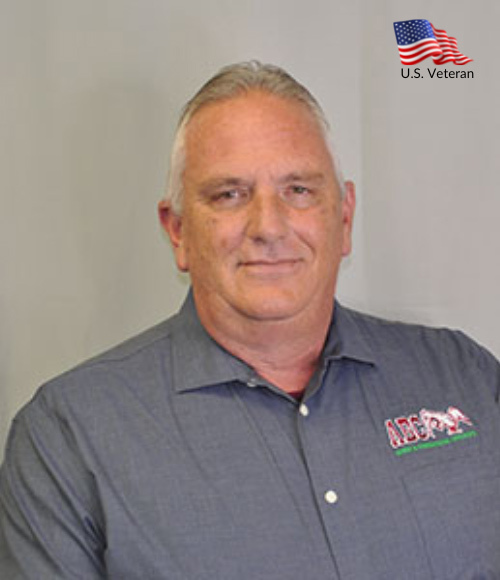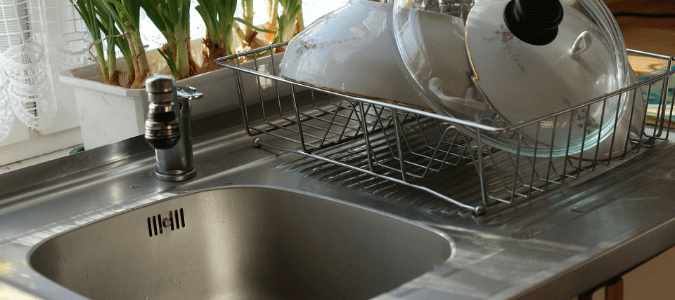
You’re relieved that you finally finished the dishes and then it happens—your garbage disposal water comes back up. To your dismay, water mixed with bits of food is now flowing into your sink, despite just having turned on your disposal, and you’re left wondering how and why this occurred.
If you notice water backing up in your kitchen sink, one of three things has probably happened:
- There is a blockage.
- You have been overusing your disposal.
- Your garbage disposal was not installed correctly.
The most likely of these three scenarios is that you have some sort of obstruction. A blockage in your drain is made up of food and other debris that have been slowly building up over time. Before this happened, you may have noticed that your sink had been draining slower than usual. In most cases, homeowners decide to ignore these early signs of a bigger problem because water is still draining.
In some cases, items go down the disposal which are actually better suited for the garbage (or even the compost bin), which is ironic, given the name of the appliance in question. Bones, potato skin, coffee grounds, eggshells, corn husks and celery stalks are among the problematic food materials that can put a strain on your garbage disposal which can cause it to not work as well as it used to, or even stop working entirely. Likewise, grease and oil can create deposits in your system which can lead to bigger headaches.
If you routinely see water coming up the sink opposite the side with the disposal, however, an installation issue could be to blame. In these cases, you may have a T-shaped connection between your disposal and the tailpiece of the other sink that is keeping water from flowing downward. In these situations, getting a plumber to put in a Y-shaped system will resolve the problem, although you can also purchase a specialized T-shaped part that may be able to help with your drainage issue.
Calling in a professional is always the safest route when plumbing problems arise, especially when you are dealing with garbage disposals and their sharp blades. You’ll certainly want to get working on a fix as soon as possible, since food sitting at the bottom of your sink can begin to smell and become a breeding ground for harmful bacteria. If you want to try to handle a clogged drain on your own first, you’ll want to learn more about how your disposal works, step-by-step instructions on how remove blockages and how to keep your drain free of issues going forward.
First, let’s discuss the mechanics behind the operation of your garbage disposal.
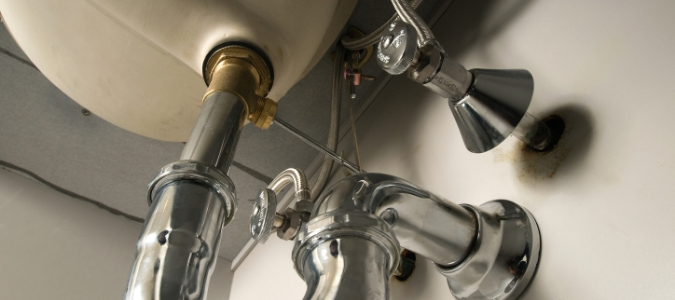
How Does A Garbage Disposal Work?
Most homeowners understand that garbage disposals have sharp blades that break down unwanted food. At the top of your garbage disposal is a splash guard, which allows food to enter but prevents it from coming back into the sink when you turn on the disposal. The food put down your disposal lands in the upper hopper chamber. The hopper chamber contains two different sections, the upper and lower chambers.
The lower chamber is insulated and contains a motor to shred your unwanted food and debris. This part of your disposal is also connected to a waste line. When you turn on your disposal, the food particles exit through the waste line.
Between the upper and lower hopper chambers is where the shredder ring sits. This component, as you might expect, is covered in tiny, sharp grooves which help shred up the food. If you’ve ever noticed that your garbage disposal is humming, the culprit is sometimes a jammed shredding ring.
Attached to the bottom of the shredder ring is a rotating metal turntable, or the flywheel. The flywheel catches food and prevents it from falling into the lower hopper chamber until it is small enough to pass through the waste line.
Also located at the lower hopper chamber is the waste line connector, which allows food to be flushed out into a drain pipe.
If you don’t allow enough water to flow through your drain after running your disposal, the waste can’t be flushed through your pipes and therefore will create a blockage over time. If you’re putting items you shouldn’t be down your garbage disposal, such as eggshells, coffee grounds and potato or banana peels, these materials can combine together to create a paste that easily gets stuck to your blades and pipes. When food and other debris build up over time in the drain pipe or waste line connector, you may experience a clog that blocks water from flowing out of your sink.
Now that you better understand the inner mechanics your sink, let’s discuss how to address the problem.
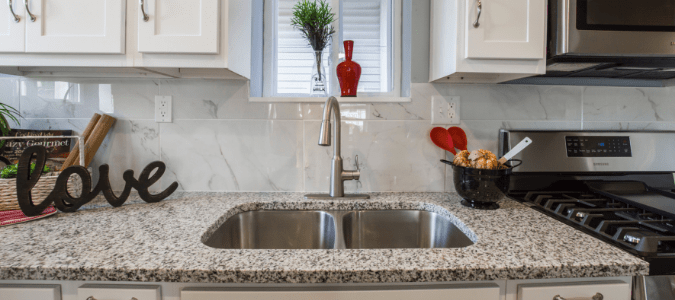
How To Unclog A Kitchen Sink With A Disposal
If you’d rather attempt to remove the obstruction yourself before calling in a professional, there are a few things you can try:
- Point a flashlight down into your garbage disposal and pull out any visible blockages with tongs. Avoid using your hands to protect yourself from possible injury.
- Pour a mix of baking soda and vinegar down your drain. Then, wait about thirty minutes to allow these ingredients to break down whatever might be responsible for the blockage. Once the time is up, pour hot water down the drain to flush out any debris. Let the water flow for a few minutes to fully wash away any remaining buildup.
- If that doesn’t work, you can also try putting a handful of ice cubes down your drain with a few tablespoons of salt. After waiting five minutes, turn on your garbage disposal. The rough texture of these materials can help break down that stubborn food and oil that might be lodged in your disposal.
Avoid pouring any type of chemicals down your drain, as doing so can be a safety hazard.
If these methods don’t work, you may have a larger or more complicated issue than just your disposal, and so many homeowners stop here and call in a professional. In addition to the time and tools needed to attempt to deal with the issue, some homeowners learn the hard way that they can inadvertently cause damage to their pipes and equipment while attempting this type of plumbing repair on their own.
If you’re determined to roll up your sleeves and get your water draining properly again, follow these steps closely:
- Turn off your garbage disposal. An accident involving electricity could cause serious harm.
- Go under your sink and clamp the dishwasher drain line with either a hand or bar clamp. This will prevent the dishwasher drain hose from popping off the disposal nozzle as you plunge the sink drain.
- Fill up your sink with water. Insert a sink stopper into your second sink to help with the suction when you use a plunger.
- Place a sink plunger over your drain and start to forcibly push up and down. You’ll want to keep in mind that a sink plunger and a toilet plunger are different and using a toilet plunger will not effectively unclog your sink and could spread bacteria.
- After repeating this motion three to four times, see if your drain clears. If water still will not drain, try using your plunger five to seven times and then running water down the drain.
- Once you see that the drain clears, let hot water flow down the drain for a couple of minutes. This will allow any backed up debris to be cleared out.
If water is still backing up, you’re going to have to get under your sink and clear out all of that food and debris yourself. To do so, you’ll need to clean out either your P- or S-trap. Before you detach any of the parts, place a bucket underneath the sink to catch all of the debris that you may discover.
When you are ready to proceed, take a wrench and unscrew the P- or S-trap that you have under your sink (your home will have one or the other). Your bucket will catch any gunk and water that may have gotten stuck around this bend in your pipe. If nothing comes out, you’ll have to use a plumbing snake to pull out whatever debris has clogged your drain. Wear gloves when you attempt this step, as there has likely been a build-up of bacteria along with the build-up of food and your safety should be your top priority.
If pulling old, moist food out of your drain doesn’t sound like an ideal way to spend your Saturday, you may want to call in a professional. You may also need the help of a plumber if removing that blockage from your drain doesn’t help your problem. This probably means your situation is more serious than you thought.
What if your problem hasn’t escalated to that yet? Some homeowners might find that as long as they turn on their garbage disposal, the water seems to go down the drain just fine.
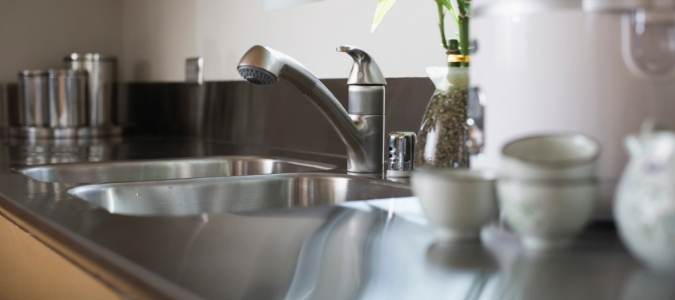
What If My Sink Only Drains When The Garbage Disposal Is On?
Unfortunately, if you can still get your sink to drain, but you just need a little encouragement from your garbage disposal, you’re on your way to having your garbage disposal water come back up.
The reasons your sink only drains when the garbage disposal is on are essentially the same reasons that water would come back up: your sink was not installed correctly (which is probably unlikely, unless you own a new home or sink), your garbage disposal needs to be cleaned or there is a blockage in your system. If your sink was not installed correctly, as you probably have guessed, you’ll likely need a professional’s help to get things working correctly again. If your disposal needs to be cleaned, use either the baking soda and vinegar method or the ice and salt method we already mentioned to get rid of any grime that may have built up in your disposal. If there is a blockage in your system, you’re going to have to spend more time troubleshooting your plumbing to get your water draining properly.
If you want to quickly figure out what exactly is going on, you can call in a professional plumber to quickly assess the situation for you and advise you on the best next steps.
If you were able to get your drain cleared yourself, using any of the methods we have already discussed, you probably want to keep from being in this grimy situation in the future.
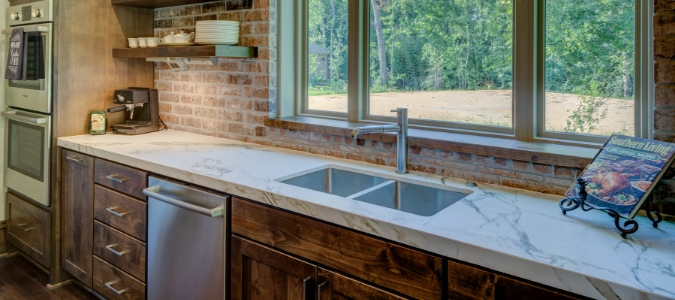
Drain Maintenance Tips
There are certain things you can do to extend the life of your garbage disposal and keep it clean. For example, you should never put the following things down your garbage disposal:
- Eggshells
- Oil, fat or grease
- Fibrous foods, such as celery, asparagus and onions
- Starches, such as potatoes, beans and pasta
- Coffee grounds
- Bones
- Any non-food item
Also, whenever you do use your disposal, keep a decent flow of water running until you switch your unit off so your food scraps are able to pass through smoothly.
To keep your drain cleared, you can try pouring a large pot of hot, but not boiling, water down your drain, and then follow it up with some cold water to flush out any leftover debris. Or, you can pour a mixture of baking soda and vinegar down your drain and let it sit overnight. Flush out your drains in the morning with hot water and repeat this process once a month.
Even with proper maintenance, it’s important to know how long garbage disposals last so you know when it’s time to get a new one installed instead of constantly trying to address issues with your current unit.
ABC Can Handle Your Plumbing Problems
If trying to dislodge a wall of food in your pipes doesn’t sound like an ideal way for you to spend your weekend, call in ABC Home & Commercial Services. Our licensed plumbers can unclog even the most stubborn drains and then give you advice on how to keep them clear in the future. Also, we can install, repair or replace any brand of garbage disposal. With ABC’s help, your sink will be running properly again without your having to lift a finger.
